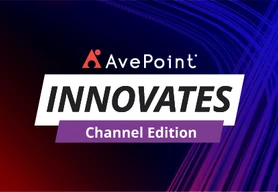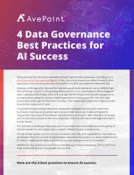For example, as part of your application lifecycle management in Power Apps, it’s a best practice to follow a three-environment strategy:
- build an app in a sandbox environment;
- trial it in a test environment; and
- deploy it in production environment.
Discover better multi-SaaS management practices to improve your SaaS operations and create a safer and more secure digital workplace
According to Gartner, the average business maintains 125 SaaS applications. Many organizations are struggling to keep up with this snowballing tech stack, juggling multiple subscriptions and licenses while worrying about the security and compliance risks of all these applications.
At AvePoint, we understand the challenges that come with managing multi-SaaS applications. That’s why we’ve put together this guide to showcase the value of better SaaS management as well as give you best practices and solutions to enhance your SaaS operations, making it easier to manage your organization’s portfolio.
In this guide, we’ll cover strategies to:
With better SaaS management practices, you can ensure your applications are not only available, secure, and cost-effective, but that your team can use them to their full potential, maximizing your investment and driving performances and profits for your organization.
Download this free eBook to start maximizing your SaaS potential today.
Proper SaaS management has so many perks – such as process simplification and tool optimization – that can be realized quickly. However, the true value lies in the long-term benefits: sustainable scalability, maximized investments and future-proofed digital workspaces. By effectively managing your SaaS environment, you can ensure that your organization is equipped to adapt to changing and growing business needs and technological advancements, leading to continued success and growth over time.
For example, as part of your application lifecycle management in Power Apps, it’s a best practice to follow a three-environment strategy:
Allow your end users to create their own workspaces but require them to complete a questionnaire during provisioning, identifying the purpose and intended membership to ensure the appropriate policies are applied. An example of a right-sized policy and appropriate permission management: if your user indicates their workspace will be used for sensitive information, prohibit the space from being public and require verification before any external user is added as a member.
Things like accidental oversharing, misconfigured permissions, or unmonitored external users can easily sneak past your policies and be a real threat to your security. Unfortunately, your IT can’t constantly watch for missteps like this, particularly across hundreds of applications and workspaces. That’s why you need to scale your security by going beyond policies and procedures, monitoring for risks in your environment and taking action quickly to remediate them.



